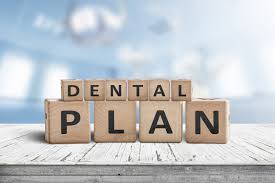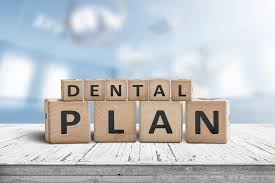Although the prospect of sitting on a dentist’s chair makes some people nervous, the possible cost deters many others. If your job provides dental insurance or you can afford to purchase it for yourself, you should select a plan that covers the dental care you and your family will require now and in the future. This post will explain how to compare dental plans and the key elements to consider when choosing a dental plan.
According to the American Dental Association, the expense of dentistry is a greater barrier to care than medical care, pharmaceuticals, mental health care, or vision care.
On the plus side, dental costs are typically easier to predict (and smaller) than the vast range of medical fees that any of us may face at any time. Some dental care will still be an unexpected emergency, such as a broken tooth. Regular, routine cleanings and examinations that involve diagnostic X-rays to analyze the overall condition of the teeth, gums, and jaw can often forecast (or avert!) less evident dental needs.
What’s Included in a Dental Plan?
Preventive and Diagnostic Care
Periodic examinations, cleanings, X-rays, and fluoride and sealant applications to prevent cavities are all part of the package. The majority of dental policies will cover the entire cost of these services.
Basic Restorative Services
This covers fillings and root canals, two of the most prevalent types of dental care. Most dental plans will pay the bulk of the cost of these services.
Major Restorative Services
This covers more complicated procedures including crowns, bridges, dental implants, and dentures. Many dental plans only cover roughly half the cost of these procedures, and many have waiting periods before major services are reimbursed. Dental plans also have very modest yearly benefit maximums, which are likely to be met if a patient requires numerous major services.
Types of Dental Plans
Because they do not have provider networks, freedom-of-choice dental plans, also known as dental indemnity plans, allow the most flexibility. The member may see any dentist, and the plan will reimburse him or her depending on the price schedule. However, this does not imply that the plan will cover the entire cost; the member is responsible for the difference between what the dentist bills and what the plan pays, and some dental indemnity plans have extremely low coverage limitations.
Many dental plans are managed-care plans in which patients must select from a pre-approved list of dentists in a network of providers who have agreed to reduce their prices. These plans can be dental PPOs or dental HMOs, and the restrictions are similar to those of medical PPOs and HMOs, with the latter often not giving coverage if the member obtains care from a dentist who is not in the plan’s provider network.
Because dental HMOs are more restrictive and do not cover out-of-network care, their premiums are often lower than dental PPO premiums if the coverage amounts are comparable. However, if the HMO provides more coverage and has a higher benefit cap, it can be more expensive than a dental PPO.
Dental Plans and Costs
If you acquire your dental insurance via your job, you may only have one plan option. However, a larger business may provide you with a variety of plans, and if you purchase your own dental insurance, you can choose from any plan available in your area.
So, how do you make your decision? The three most important considerations are likely to be which dentists you can see, how much you’ll have to pay in monthly premiums, and how much out-of-pocket expenditure you feel you can reasonably bear.
The affordability of a plan is determined by its premium payments and the fraction of dental expenditures that you must pay yourself, either because the plan does not cover them or just covers a portion of the cost.
Before deciding on a dental plan, go to your dentist for an evaluation that includes diagnostic X-rays. Allow your dentist to evaluate your general dental health and determine whether you will require any complex procedures in the near future.
However, it’s crucial to remember that if you buy your own dental insurance rather than having coverage through your workplace, you’ll likely have to wait six months or a year before you’ll be covered for procedures more than basic cleanings, X-rays, and fillings. So you won’t be able to get a self-purchased dental plan that will cover the crown you’d like to obtain next month.








































No Comments